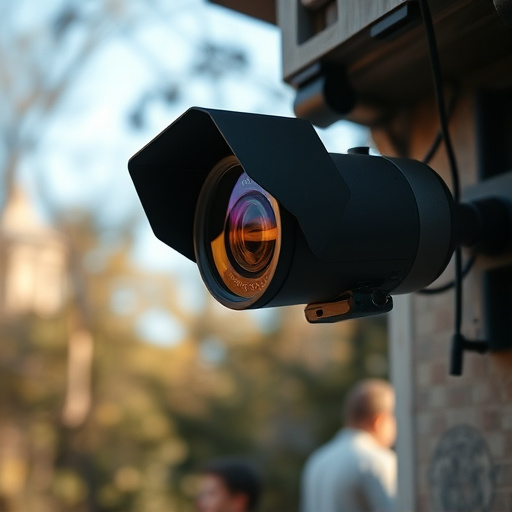The Light Reflection Technique is an advanced optical method for detecting concealed cameras, especially those used in babysitter monitoring. By strategically directing light and analyzing reflections from surfaces, this technique identifies irregular patterns indicative of camera lenses. Using natural lighting and reflective surfaces, it offers a non-intrusive way to ensure privacy and safer monitoring environments without noticeable equipment installation. However, effectiveness depends on lighting conditions, and sophisticated hidden cameras may evade detection, so combining this method with others is recommended for comprehensive coverage.
Uncover the secrets behind a cutting-edge method for spy camera detection: the Light Reflection Technique. This innovative approach revolutionizes babysitter monitoring, ensuring your peace of mind. Learn how subtle light reflections can expose hidden cameras, providing a powerful tool against privacy breaches. Explore the equipment and simple steps to implement this technique, and discover its benefits in enhancing safety without drawing unnecessary attention. Say goodbye to concealed cameras and hello to transparency.
- Understanding Spy Camera Detection: The Light Reflection Technique
- How Does Light Reflection Help in Detecting Hidden Cameras?
- Implementing the Technique: Equipment and Steps Involved
- Benefits and Limitations of Using Light Reflection for Babysitter Monitoring
Understanding Spy Camera Detection: The Light Reflection Technique
Understanding Spy Camera Detection: The Light Reflection Technique involves utilizing advanced optical principles to uncover hidden surveillance devices, such as concealed cameras used for babysitter monitoring. This method leverages the reflection of light off surfaces to detect irregular patterns that may indicate the presence of a camera lens. By shining a specialized light source onto potential hiding spots, reflections are analyzed for any anomalies—a technique known as light signature analysis.
The approach is particularly effective in identifying tiny lenses or micro-cameras that are often difficult to spot with the naked eye. The reflection pattern can reveal subtle differences in lighting conditions caused by the camera’s presence, enabling users to locate and disable these hidden devices. This technology empowers parents and caregivers to ensure their homes are safe for their children, promoting peace of mind while fostering a secure environment.
How Does Light Reflection Help in Detecting Hidden Cameras?
Light reflection plays a crucial role in detecting hidden cameras, especially in sensitive areas like homes or childcare settings where Concealed Cameras for Babysitter Monitoring are a concern. When light encounters an object, it interacts with its surface, reflecting in various directions. By strategically shining light onto potential hiding spots, such as corners, behind furniture, or on walls, any reflective surfaces can be identified. Cameras, being electronic devices, often have reflective lenses or components that can subtly reflect light differently from the surrounding environment.
Through careful observation of these reflections, one can spot unusual patterns indicating the presence of a hidden camera. This technique is particularly useful for professionals who specialize in security and surveillance, helping them locate covert cameras used for illegal monitoring or invasive privacy breaches. By understanding how light interacts with different surfaces, individuals can enhance their chances of identifying hidden devices, ensuring a safer and more secure environment.
Implementing the Technique: Equipment and Steps Involved
Implementing the Technique: Equipment and Steps Involved
To employ the light reflection method for detecting hidden cameras, particularly for babysitter monitoring, you’ll require a few essential tools. First, acquire a high-quality digital camera with adjustable settings, allowing manual control over exposure and ISO. A telephoto lens can enhance precision. Additionally, invest in an infrared (IR) flashlight or emitter to shine light into suspected areas.
The process begins by carefully examining the space using normal lighting. If any Concealed Cameras for Babysitter Monitoring are present, they may reflect IR light differently than the surroundings. Once potential targets are identified, switch to IR illumination and observe the reflections on a monitor or camera feed. Any unusual patterns or discrepancies could indicate the presence of a hidden device, ensuring a safe and secure monitoring environment.
Benefits and Limitations of Using Light Reflection for Babysitter Monitoring
The use of light reflection as a technique for detecting concealed cameras in babysitter monitoring offers several advantages. It is a non-intrusive method that leverages natural lighting and reflective surfaces to reveal hidden recording devices. This approach allows parents or caregivers to ensure their privacy without installing noticeable equipment, thus maintaining an unobstructed environment for the babysitter and children. By analyzing light reflections, patterns, and distortions, suspicious activities can be identified, making it a subtle yet effective strategy for monitoring.
However, this technique also has its drawbacks. Light reflection is highly dependent on lighting conditions; uneven or low lighting may hinder its effectiveness. Additionally, sophisticated hidden cameras designed with specific reflective properties can evade detection by reflecting light in ways that appear natural. As such, while light reflection provides a valuable tool for babysitter monitoring, it should be combined with other methods to ensure comprehensive coverage and account for potential limitations.
The light reflection technique offers a promising approach to detecting concealed cameras, particularly for parental monitoring. By utilizing specific lighting conditions and analyzing reflections, it becomes easier to uncover hidden devices. While this method has its benefits, such as non-invasiveness and affordability, there are limitations, including potential false positives and the need for precise angle calculations. For those seeking to ensure the safety of their children while employing concealed cameras for babysitter monitoring, understanding these techniques can empower them to make informed decisions and maintain a vigilant eye on their loved ones.
